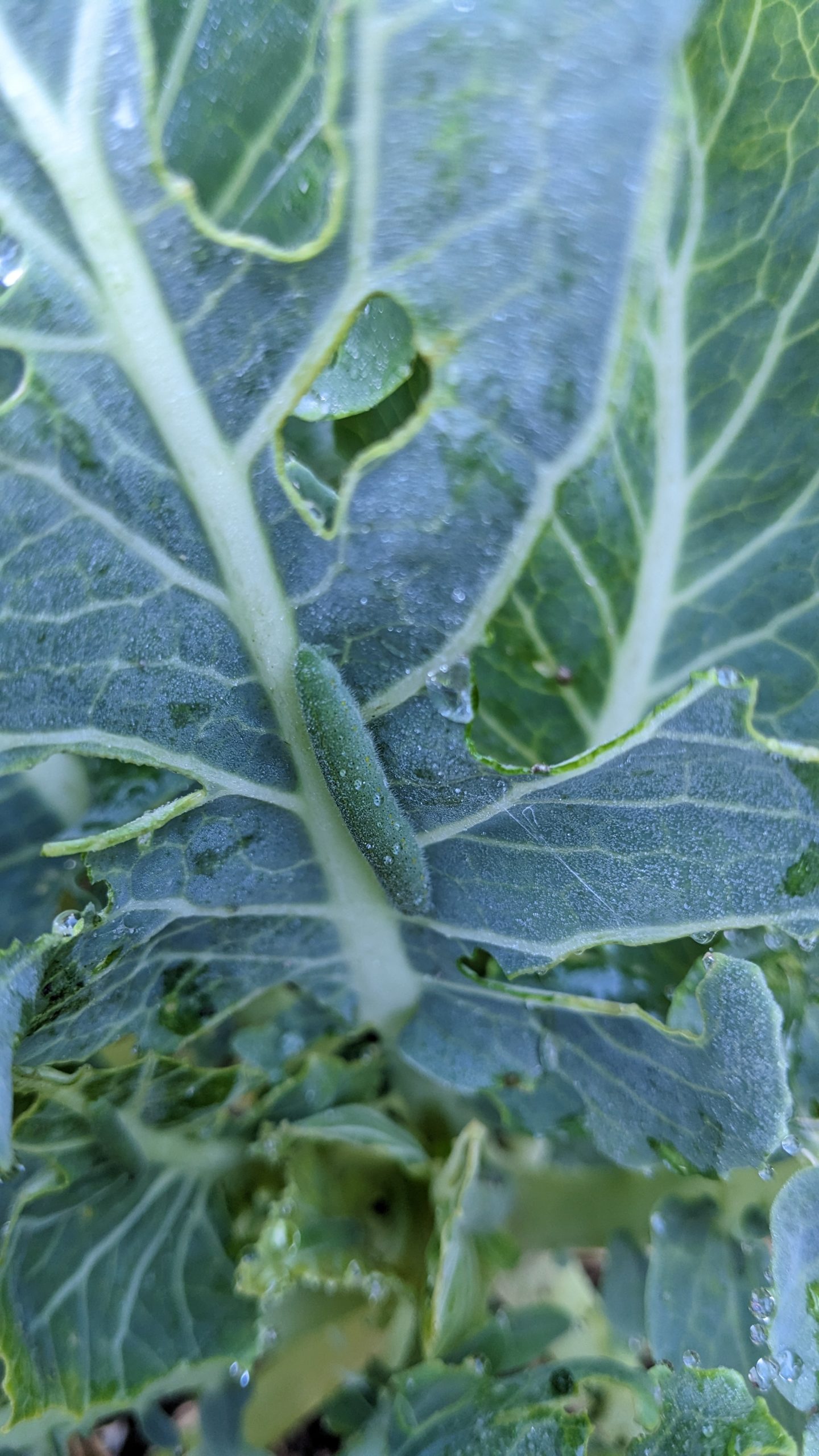Time to wage war on winter pests | In Your Patch

Terri Sharpe says with rabbits, parrots, possums, rats, scale, aphids, citrus leaf miner, leaf curl, cabbage moths, and the usual snails, slugs, and weevils out in force, it's time wage war against winter pests.
If your garden is anything like mine right now, you’re in the middle of a fierce battle – with rabbits, parrots, possums, rats, scale, aphids, citrus leaf miner, leaf curl, cabbage moths, and the usual snails, slugs, and weevils all living their best lives – on your edibles! We also have quendas in the school garden but as they don’t eat our edibles, we’re very happy they’ve chosen our garden to call their home. These battles require an arsenal of equipment, time, and determination. And if you want success, you must be vigilant!
Possums? Use netting. We also isolate the fruit by either tying small bags around individual fruit or if you’re lucky enough to have large trees and a lot of fruit, isolate your target tree by pruning surrounding trees to make access more difficult. If you can make access via the trunk only, you may have success with possum guards that make it difficult for them to maintain grip. We also tie small bags of dynamic lifter into the tree, to ensure there is a constant strong smell of fertiliser.
Rabbits? Fence low lying beds, trap and release elsewhere, or in severe cases virus release may be a solution.
Parrots? Netting, plant your favourite trees close to areas of high human activity (where kids play, near front and back doors, patios), or if you’re able, place your dog’s kennel near target trees.
Rats? Owl friendly poison (away from other animals and pets), electric traps, a cat or dog! Netting will not work – they eat through it.
Snails, slugs, and weevils? Try companion planting, snail baits (away from pets), beer traps, egg shells around seedlings, or protection of seedlings via plastic, water, or glass barriers.
Citrus leaf miner? A small moth is responsible for the eggs that turn into larvae and do the damage inside the leaves. You can spray a horticultural oil onto foliage to discourage the moths or use a systemic insecticide that will enter the leaf and reach the larvae. You can also cut away affected new growth as it tends to be the new softer growth they target, fertilise for overall strong plant tree growth, and be vigilant! Spray with a horticultural oil once every month or more until new growth is strong.
Aphids and scale? There are some effective sprays available from your local hardware, you can also remove affected foliage by hand, improve air circulation, fertilise and water regularly as stronger plants are better able to fight pests and diseases, spray aphids with the hose (I find they tend to return), or introduce and encourage beneficial insects that eat them, like wasps and ladybugs (not to be confused with the 28 spotted ladybug – they’re a bad bug). To encourage the beneficial, minimise insecticide use and plant plenty of flowers.
Leaf curl? It’s all about the timing. Spray a sulphur or copper-based fungicide on all affected stone fruit trees when the tree is dormant but before flowers appear – the best time is right at bud swell but before they open. For major infestations do it two weekends running. If you miss the best treatment window, you can still do it (it is better than nothing) but it won’t be as effective.
Cabbage moth larvae? Dipel. Those covered veggie pods are also amazing, not only deterring cabbage moths but most of the other pests as well.
So there you have it. It’s always a compromise when using any chemical and the pros and cons must be weighed carefully.
If all that hasn’t put you off the idea of growing edibles, it’s time to plant Asian greens, pop in an artichoke, beetroot, dill, radish by seed, year round carrots by seed, silver beet, English winter spinach is an absolute winner, broad beans can still go in, leeks, it’s time for potatoes if you want to try them in a bag or container, all brassicas although they’ll be coming into season quite late but given our mild start they’ll still grow if you choose full sun spots, strawberries, and snow peas.
And what are we eating from the garden in June?
The last of the cucamelon mouse melons, Asian greens, cauliflowers, pumpkins, tromboncino, coriander, parsley, chilli, lemons, limes, mandarins, yacon, beetroot, carrots, spring onions, silver beet, and chard. Good luck fighting for your edibles. You put in the time, money, effort, and care – you shouldn’t have to share the rewards unless you choose to!
Terri Sharpe is Coordinator and Garden Specialist of the Margaret River Primary School Kitchen Garden Program.


















